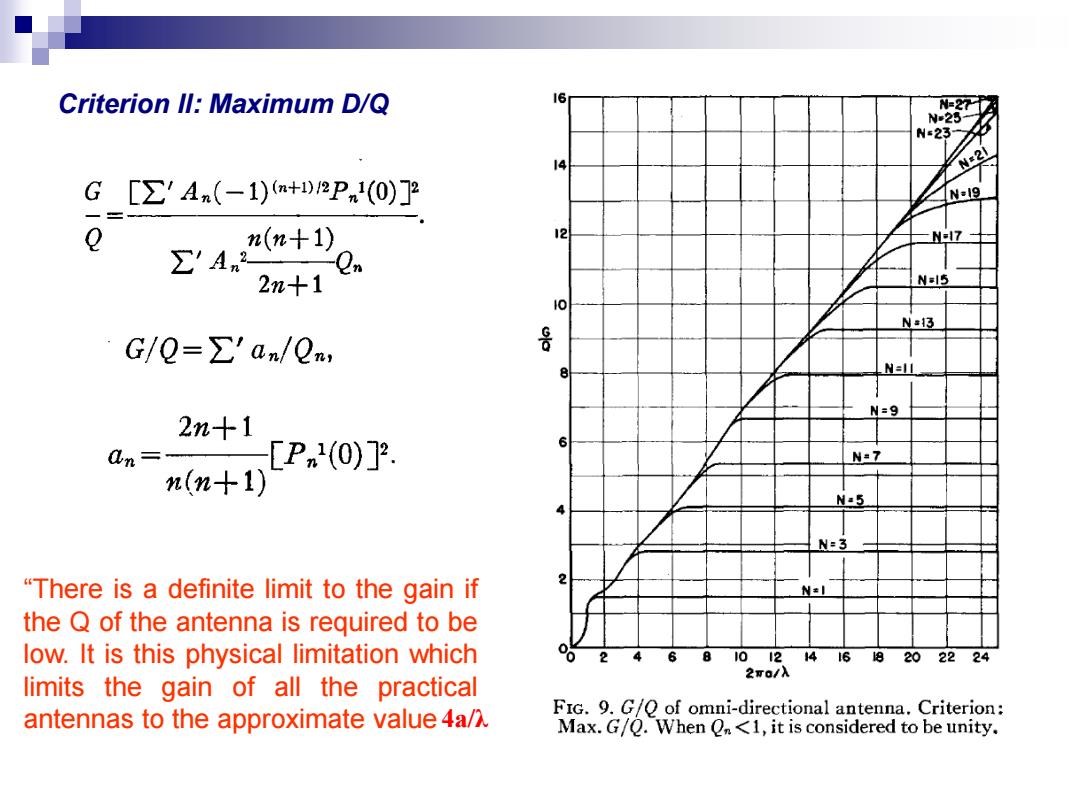
Criterion ll:Maximum D/Q 16 N-27 N25 Ns23- 14 N=21 G[∑'An(-1)n+)Pm1(0)]2 N-19 Q (n+1) 12 N7✉ ∑'An2 2n+1 N=15 0 N=3 G/Q=∑'am/Qm, : N=ll N=9 2m+1 6 An- [Pn2(0)]2 N=7 (2十1 N.5 N=3 "There is a definite limit to the gain if N2l the Q of the antenna is required to be low.It is this physical limitation which 6246010124168202224 2g0/入 limits the gain of all the practical antennas to the approximate value 4a/ FIG.9.G/O of omni-directional antenna.Criterion: Max.G/Q.When On<1,it is considered to be unity
Criterion II: Maximum D/Q “There is a definite limit to the gain if the Q of the antenna is required to be low. It is this physical limitation which limits the gain of all the practical antennas to the approximate value 4a/λ

More straightforward and exact method-by J.S.McLean we=c Electric energy density: 2 A,=-cer(-) 26(E12+1E,2) Ho=sin 0 e-jkr +4s2o(,+】 and 1 Ee= sine e-ikr Jwe 1 wm=】 μi.i* magnetic energy density: E,=2os8ew(知+ 】 =24H2 1 (+) James.S.McLean,"A re-examination of the fundamental limits on the radiation Q of electrically small antenna",IEEE Trans.Antennas Propagat.,vol.44,no.5,May 1996
More straightforward and exact method-by J.S. McLean Electric energy density: magnetic energy density: James.S.McLean, “ A re-examination of the fundamental limits on the radiation Q of electrically small antenna”, IEEE Trans. Antennas Propagat.,vol.44, no.5, May 1996